
Freestanding, walk-in phone booths used to be ubiquitous all over town, but even before cell phones began taking over in the 1990s, street telephones had been replaced for the most part with open-air stanchions. Callers used to be able to walk into a booth, close the door, and talk without being heard. However, in the Swinging Sixties, vandals began their eternal work on the booths, depositing urine and graffiti and slashing the phone books provided as a courtesy by whatever provider was in charge of the telephony service. The stanchions were treated in the same rude fashion, especially after cellphones became nearly universal. New Yorkers treat all nonfunctional street devices such as telephone stanchions and fire alarms as garbage receptacles.
Thus it’s something of a surprise to find four freestanding walk-in booths in NYC, all of them on West End Avenue; the one shown above is on West 66th Street…
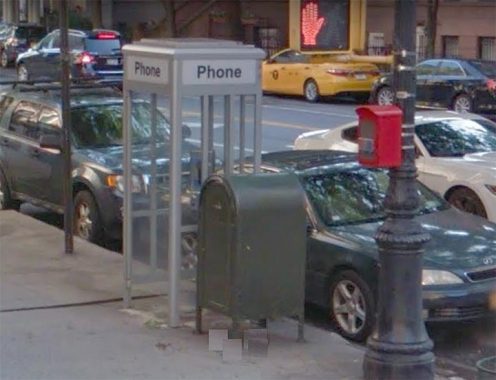
…there’s another one on West 90th….
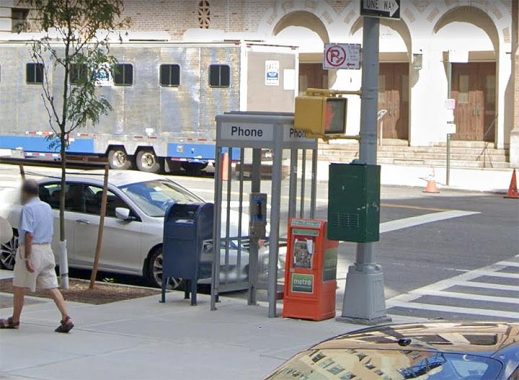
…one more at West 100th….
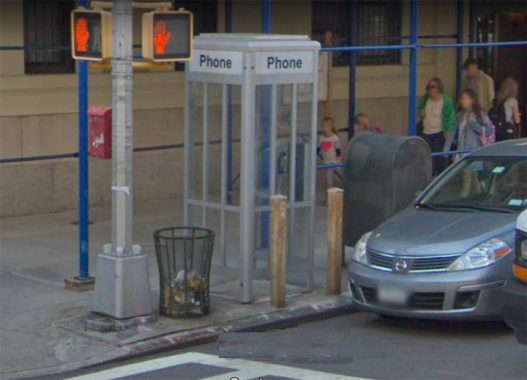
…and the last of the quartet, at West 101st.
However, all four of them are “retro-booths,” replicas that are made to look like the classic walk-in booths of old. They were installed in 2016 by Intersection, a tech company that is installing the by-now familiar Link kiosks that provide cell phone chargers, public service messages, and other internet services. Unlike booths of old with pay phones, you can use the phones in these booths for free.
At these four corners, there had been four surviving older booths. According to The New York Times, an Upper west Sider named Alan Flacks was instrumental in preserving the booths, petitioning elected officials and calling Verizon, the booths’ old provider, when one or more was out of service.
It wasn’t easy to find freestanding phone booths to replace the originals with. Intersection had to turn to a Canadian dealer to find them, via a company called Clark Specialty in upstate Bath, New York.
Thus far…they’re in good shape.
Check out the ForgottenBook, take a look at the gift shop, and as always, “comment…as you see fit.”
11/26/20


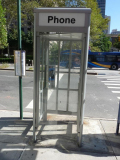
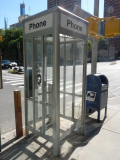
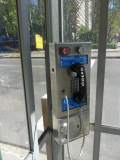
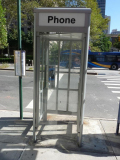
5 comments
Note the very rare cast iron or steel “foundation cap” supporting the street light in the last photo These were used during the early days of the
mercury vapor relighting program when replacing a cast iron street light pole that held a fire alarm box.
During summers off from college in the 60’s, I worked at Western Union typing telegrams that people called in from pay phones. They paid by putting coins into the slots. A quarter made a “dong”, a dime a “ding ding”, and a nickel a “ding”. It was fairly easy to count when they had their coins sorted, but once in a while a wiseguy would mix them up and I’d hear “ding ding, ding, dong, ding, ding ding, dong, ding…”. If I lost track of the count, I’d pull a lever which returned ALL the coins, and I’d tell them to sort them and start again. They’d get the idea after one or two repeats.
Speaking of pay phones, do you remember when you lost a dime in a pay phone and called the phone company the next day to complain ? After giving your name and address, they would send you a dime
attached to a 3″ x 5″ card. Happened to me.
I remember when a lot of office buildings in NY had a telephone booth “bank” of at least 4 booths situated just off the main entrance so that there was less noise
to interfere with your call.When you closed the folding door a light came on on the ceiling to light up the space.So cozy and private and way too civilized for today.
when I was a kid, you could actually get a dime returned through the slot if you called the operator – we’d do that a few times and get 10cent pizza slices. then the telephone company started sending 10 cent checks to my house…my mother was not amused.